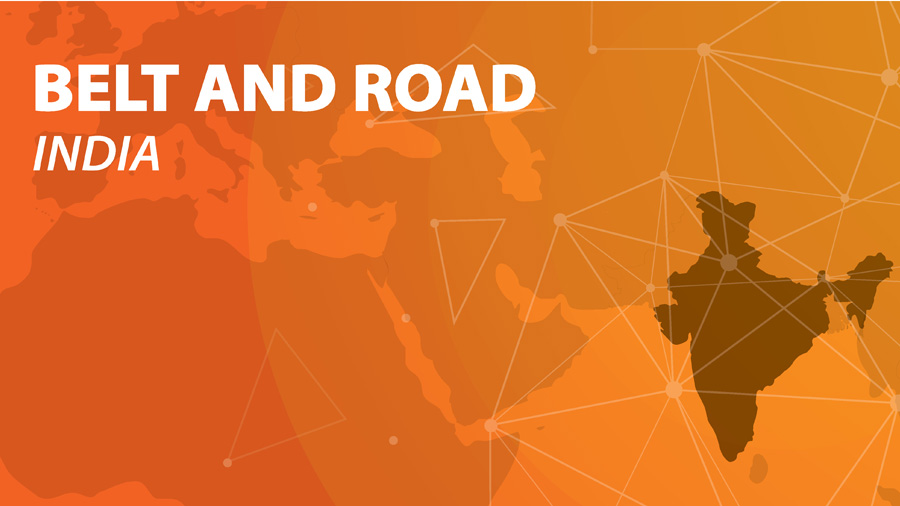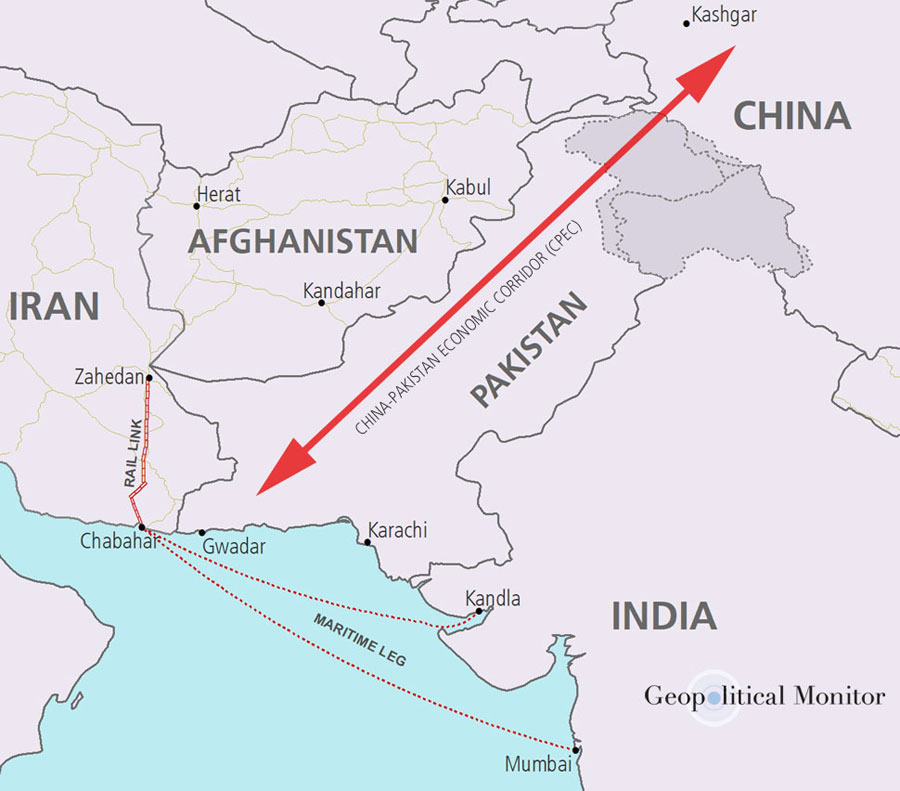Belt & Road Initiative: India

Op/Ed By Chris Devonshire-Ellis
Is India Part Of China’s Belt & Road? Diplomatically, No. Practically, Yes.
Last updated May 18 2020.
The recent news that India, at the recent Shanghai Co-Operation Organization meeting had “downplayed” China’s Belt & Road Initiative and refused to sign a Belt & Road MoU is nothing especially new. The disputes with China go back to the late 1940’s and have roots in both the partition of Pakistan from India and the Chinese occupation of Tibet. Seeing India as an immediate geo-political rival, Beijing adopted a fairly antagonistic approach towards Indian history, which included lands disputed between India and Pakistan, and lands disputed between India and China over where the true border with Tibet actually was. This ultimately resulted in a short border war between the two nations in 1962, from where an uneasy truce has been maintained ever since, give or take the sporadic rattling of sabres every now and then. Kashmir remains a sticking point.
India won’t recognize China’s Belt & Road officially as a result of these border disputes, and the CPEC agreement with Pakistan in particular, runs through disputed territory – firmly under Pakistani control, but fiercely claimed by Delhi. We wrote about this in the article “Understanding the China-Pakistan Economic Corridor”.
Delhi’s logic is that by officially recognizing China’s Belt & Road Initiative, it officially recognizes the disputed territories as being Pakistani or Chinese. Attempts to get India to sign a Belt & Road MoU then are going to be falling on unsympathetic ears until these disputes can be resolved. This seems decades away.
Nonetheless, India is a player in the Belt & Road Initiative, albeit on a proxy basis. Despite being rather cheekily listed as a “Belt & Road Nation” on the Hong Kong Government Trade Development Centre Belt & Road website (we did advise them of the mistake, we were ignored) India has participated in other Belt & Road themed initiatives, such as the Asian Infrastructure Investment Bank (AIIB ) where it is the second largest investor after China. India has also taken up a shareholding in the BRICS New Development Bank (NDB ) and is a full member of the Shanghai Cooperation Organization (SCO).
Yet despite this lack of official recognition from Delhi, Chinese investment into India has been significantly increasing. In terms of bilateral trade, this hit US$84.44 billion last year (2018), increasing YoY by 19%. Of this, there was a 40% increase of Indian exports to China, amounting to a total of US$16.5 billion. While there are concerns about the trade gap, things have been moving behind the scenes.
India’s Main Exports To China
| Commodity | Value (US$, Billions) |
|---|---|
| Diamonds | 2.59 |
| Copper | 2.15 |
| Cotton | 1.3 |
| Zinc | 0.24 |
India’s moves to align itself with the AIIB and NDB are also in part a useful mechanism to hide the extent of Chinese involvement in infrastructure development. These include, either with bank assistance or without, projects to upgrade power supplies and invest in Indian businesses. Chinese SOE’s are also looking to buy stakes in Indian power and construction firms. CDC, one of China’s largest power generation utilities, has been attracted by India’s stressed power projects, while another Chinese SOE, China Southern Power Grid is apparently in discussions with India’s Essel Infraprojects for jointly bidding for power transmission networks.
Ports are another popular investment magnet for Chinese construction companies. Chinese firms’ interest stems from ambitious plans such as Sagarmala and Bharatmala. While the total road length to be developed as expressways under Bharatmala will be around 51,000km, the Sagarmala programme envisages construction of new ports to harness the country’s 7,517km coastline and setting up as many as 142 cargo terminals at major ports.
India has other issues too – being faced with competent Chinese-built infrastructure right up to its borders with Tibet, Nepal, Bhutan and Bangladesh. While these are apparently waiting to be connected to matching Indian infrastructure on the other side, India’s military, conscious of budgets, prefers to play up a threat by suggesting that building Indian roads to connect would just give the Chinese an opportunity to march onto Delhi. India’s massive, enthusiastic media often yelps at such claims, frightening the vocally democratic populace. Hence the banks being useful covers.
The New Development Bank has loaned money to India to pay for numerous infrastructure projects, not least a proposed US$224 million to build the Assam Bridge and an approved investment of US$260 million for the Mumbai Metro. Other NDB Indian projects include several billion earmarked for upgrading India’s road network.
The AIIB has also been active in India, and has approved US$1.2 billion, again for roads, with another US$1.9 billion under consideration. What will change with these deals is that it will almost certainly be Indian labor undertaking the grunt work. I recall a few years ago a scandal in one of India’s eastern states where the entire building of roads and a power station had been completed by hundreds of imported Chinese laborers, none of whom had work permits. That was abuse of tourism visas on an admirably industrial scale. Such issues have now been cleared up.
China and India are also beginning to work much more closely together on other projects across Asia. One example is the Bangladesh-China-India-Myanmar (BCIM) Economic Corridor. China has identified it as one of six essential China-Asia overland routes as part of the Belt & Road Initiative. India however has no qualms in getting on board as Delhi views it as a project that pre-dates the BRI. Regardless of the name given to projects, the two countries can be expected to jointly invest in other Asian developments, even if sometimes they are competing for the same thing. India for example has agreed to finance the development of Sri Lanka’s Kankesanthurai Harbour Port, arguably a better positioned site than China’s mega-port project in Colombo as it is closer to the Indian mainland and the significant South-Eastern Indian Port of Chennai.
India has also been financing projects of its own, which while not part of the Belt & Road Initiative as no Chinese money is involved, are part of the same thing – a massive Eurasian interconnectivity build. In response to China’s funding and developing of Pakistan’s Gwadar Port, India has been financing and developing Iran’s Chabahar Port which will in turn connect to the North-South Transport Corridor, passing north through Iran, then branching up into Armenia and on to Russia, east into Afghanistan, or west to Europe. With Mumbai to Chabahar just a 1,438km distance, India will be better able to access these markets, previously a difficulty given Pakistan’s geographical position.

These developments and infrastructure projects will continue, and are frankly much needed if India is to truly take up a position as a leading nation of the 21st century. Both countries need each other – China requiring India to be an inexpensive source of manufactured products, and India requiring Chinese investment to help improve its infrastructure. Delhi however cannot rest too easily on its laurels when looking for Chinese investment. On an upward swing its GDP might well be, and investment dollars are pouring in under Prime Minister Modi’s reforms. India has the opportunity to get this right over the next twenty years. But if it doesn’t, the danger for India is that emerging Africa will take up the manufacturing mantle and supply China instead.
This means that India’s opportunity to be involved exporting finance, expertise and production capacity with China and the Belt & Road Initiative, officially or unofficially, has competition. If it is not grasped, Eastern Africa and the African Union will step past it on the way to building supply chains through to China – and vice-versa. This requires India’s relationship with China to become rather more functional than it has been in the past. There ought to be rather more to this relationship than even last years US$80 billion bilateral trade figure has realized. India can be – and increasingly is, by default, a major player along the Belt & Road.
So where are the corridors to look at in terms of Indian Belt & Road connectivity?
First, there are the road and related transport and port infrastructure builds on India’s own territory. These are many and varied, with the Indian Government having offered a large chunk of this to foreign investors in the form of PPP’s. Secondly, projects such as the BCIM corridor will give India better overland access to China. Third, the North-South Transport Corridor and Chabahar Port access links India to Iran and Afghanistan again, albeit going the long way around, for the first time since 1947. That maritime/road/rail corridor also allows India access to Europe via connections to the Mediterranean. Alexander the Great would be pleased to see the maps.
Finally, there will be an increasing number of strategic infrastructure and regional manufacturing projects that both India and China will participate in. One example is the development of a regional passenger aircraft, which I predict will be built by a triumvirate of India, China and Russia in order to oust Boeing and partially, Airbus from providing technologies and machineries that all three nations are capable of developing. We are likely to see more Indian joint investments with both China and Russia, if not as directly part of China’s Belt & Road Initiative due to the political considerations then certainly in a financially supportive and infrastructural connective role. India therefore is right at the heart of China’s Belt & Road Initiative. It just doesn’t like to publicly say so.
That theme of India being part of China’s Belt & Road Initiative, and the 7 transport corridors it has running to the north, east, south and west can be further examined in the article India’s Regional Transport Linkages With China’s Belt & Road Initiative published on India Briefing on May 13th 2020.
About Us
Silk Road Briefing is produced by Dezan Shira & Associates. The firm provides business intelligence, legal advisory, tax advisory and on-going legal, financial and business operational support to investors throughout China, India, ASEAN and Russia, and has 28 offices throughout the region. We also provide advice for Belt & Road project facilitation. To contact us please email silkroad@dezshira.com or visit us at www.dezshira.com
 Related Reading:
Related Reading:
![]() Should India be Your China Plus One?
Should India be Your China Plus One?
![]() If There is No Trump-Xi Deal, This is How Trade Tariffs Impact China Compared with India, Indonesia, Singapore, Thailand, and Vietnam
If There is No Trump-Xi Deal, This is How Trade Tariffs Impact China Compared with India, Indonesia, Singapore, Thailand, and Vietnam





